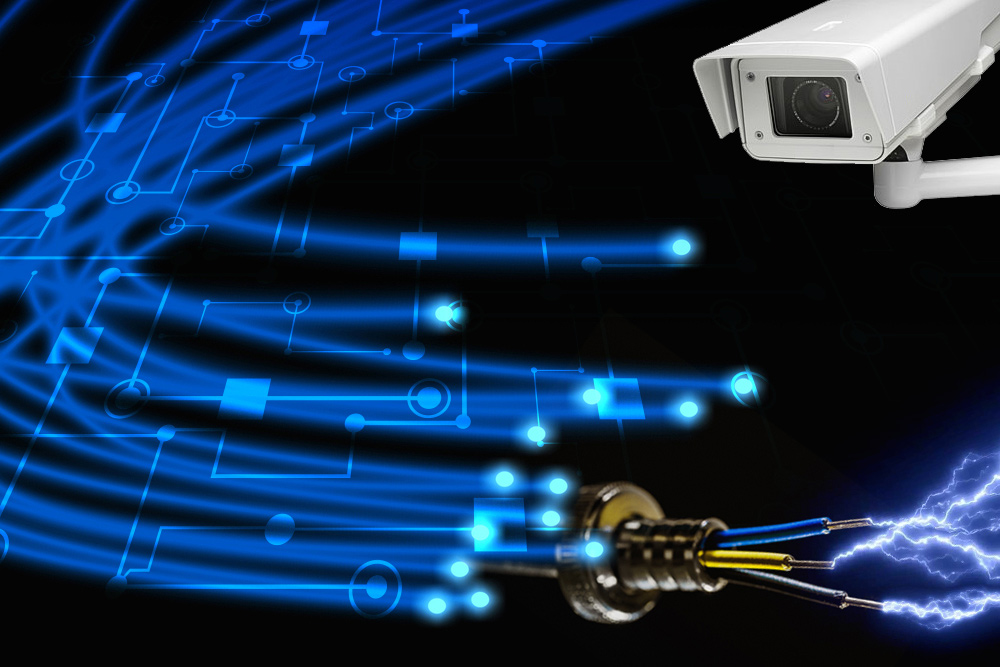The Role of Fiber Security in Enhancing Your Digital and Physical Security Network
The Role of Fiber Security in Enhancing Your Digital and Physical Security Network
Blog Article
Secure Your Home With Reputable Fiber Optic Safety Solutions
In an era where security risks are increasingly sophisticated, the demand for reliable defense options is vital. Fiber optic security systems stand out by using exceptional dependability and efficiency, leveraging sophisticated light transmission modern technology to boost security capacities. security fibers. Comprehending the complexities of fiber optic security can light up the path to safeguarding your residential or commercial property more efficiently.
Benefits of Fiber Optic Safety And Security
Fiber optic security remedies use a variety of benefits that make them increasingly crucial in today's electronic landscape. One of one of the most considerable benefits is their remarkable data transfer capacity, which allows for the transmission of big quantities of information over cross countries without significant signal destruction. This capability is specifically beneficial for safety systems that depend on high-definition video security and real-time surveillance.
Additionally, fiber optic wires are inherently extra safe than traditional copper wiring. They are unsusceptible to electromagnetic disturbance, making them less at risk to hacking or eavesdropping. This boosted safety and security is important for shielding sensitive information and maintaining the stability of security systems.
Additionally, fiber optics are much more long lasting and immune to ecological factors, such as wetness and temperature level fluctuations, making sure long-lasting dependability and minimized upkeep costs. The lightweight nature of fiber optic cords also simplifies installment procedures, allowing for higher adaptability in system style.
Exactly How Fiber Optic Equipment Job
In contemporary security applications, the procedure of fiber optic systems counts on the concepts of light transmission with flexible glass or plastic fibers. These fibers are created to bring light signals over fars away with marginal loss, making them excellent for sending information related to protection surveillance. The core of the fiber, surrounded by a cladding material, ensures that light signals remain contained within the core via a sensation referred to as total inner representation.
When incorporated into protection systems, fiber optic wires can transfer data from numerous sensing units, such as cams, motion detectors, and alarm systems, to a central monitoring terminal. The high bandwidth capability of fiber optics permits for the transmission of large quantities of information concurrently, enabling real-time surveillance and punctual reaction to possible threats.

Types of Fiber Optic Safety Solutions
Various kinds of fiber optic safety and security remedies have arised to boost monitoring and protection across various atmospheres. One prominent service is fiber optic perimeter invasion detection systems (PIDS), created to monitor and safeguard residential property limits with the discovery of resonances and disturbances along fiber optic cords. These systems provide real-time informs, enabling punctual reactions to unapproved accessibility attempts.
One more reliable remedy is fiber optic video security. This modern technology leverages high-definition cams attached through fiber optic wires to transfer video clip information over long distances without considerable loss of top quality. This configuration is particularly useful in large areas, such as airports and industrial websites, where conventional copper cords might fail.
In addition, fiber optic sensors are increasingly utilized for ecological surveillance, discovering modifications in temperature level, stress, or acoustic signals that can indicate safety and security violations imp source or hazardous conditions. These sensors provide high sensitivity and accuracy, making them suitable for crucial facilities security.

Installation and Upkeep Tips
Effective installation and upkeep of fiber optic safety and security services are crucial for guaranteeing their optimal efficiency and long life. Fiber optic cable televisions should be transmitted safely, staying clear of sharp bends or twists that could compromise their integrity.
Throughout setup, it is use this link advisable to perform complete testing of the system to validate that all parts are functioning appropriately. Routine upkeep checks ought to be set up to examine the fiber optic cables for any indications of wear or damages, in addition to to ensure that connections continue to be protected. Cleaning up the connectors occasionally is also crucial to prevent signal loss because of dirt or debris.
In addition, maintaining an upgraded inventory of installed elements and their specifications can help with less complicated troubleshooting and upgrades. By sticking to these setup and upkeep tips, property owners can maximize the efficiency of their fiber optic safety options, guaranteeing a reliable defense against prospective dangers.
Contrasting Prices and Performance
When assessing fiber optic safety remedies, recognizing the equilibrium in between prices and effectiveness becomes extremely important (security fibers). Organizations must consider the in advance financial investment, recurring upkeep costs, and the lasting value these systems offer. While fiber optic systems may require a higher initial installation price compared to standard copper electrical wiring, their longevity and decreased vulnerability to electromagnetic disturbance often translate to lower upkeep expenses over time
Efficiency is another crucial factor; fiber optic security systems supply boosted information transmission rates and improved reliability. They can cover bigger ranges without signal deterioration, making them optimal for expansive buildings or remote places. In addition, the high data transfer capability supports innovative safety applications, such as high-definition video clip monitoring and real-time monitoring, which are vital for extensive protection administration.
Ultimately, the choice between Go Here expense and effectiveness must be directed by details safety and security demands and risk evaluations. Organizations must examine their unique demands, considering aspects like residential property dimension, protection risks, and technical developments. By performing an extensive cost-benefit evaluation, stakeholders can make informed decisions that align with their protection objectives while guaranteeing an audio financial investment in fiber optic technology.
Final Thought
In verdict, fiber optic protection options use significant advantages in terms of efficiency, dependability, and resistance to environmental interferences. Inevitably, the fostering of fiber optic technology stands for a forward-thinking strategy to securing properties against evolving protection dangers.
Report this page